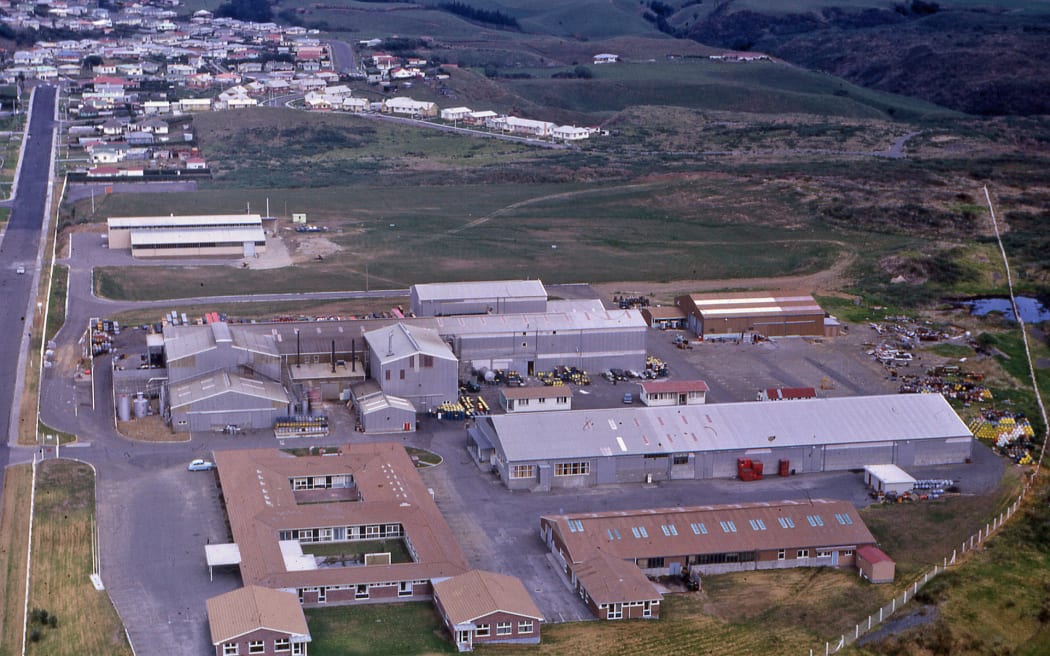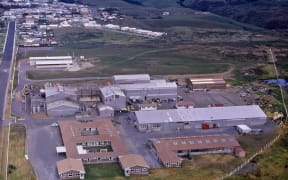
Steven Parkes lived in Paritūtū during the 1960s. He said he'd lost many friends and neighbours to cancers. Photo: Supplied
New research accuses authorities of a long-standing campaign to suppress evidence about the health impacts of dioxin emissions from the production of the herbicide 2,4,5-T in New Plymouth during the 1960s.
Sarah Monod de Froideville, a lecturer at Victoria University of Wellington's Institute of Criminology, argues that at best officials were guilty of "strategic ignorance" when investigating emissions from the Ivon Watkins-Dow agrichemicals plant at Paritūtū, and at worst, of a "cover-up".
From the 1960s through to 1987, Ivon Watkins (later Ivon Watkins-Dow) made the herbicide 2,4, 5-T at Paritūtū, which contained the toxic dioxin TCDD.
The herbicide was a key component of Agent Orange - the defoliant used by the US military in the Vietnam War - and has been linked to cancers and birth defects.
The TCDD content of 2,4,5-T was highest in the 1960s.
Steven Parkes grew up in Paritūtū and still lived nearby.
"I can remember my mother hanging her white sheets on the clothesline and all this orange foamy stuff would come across the sky and you'd hear mum go 'oh bugger it I've got to wash the sheets again'.
"I can remember taking my surfboard over to Back Beach and seeing this orange liquid coming down the footpath and we used to paddle through it.
"And I used to see 44 gallon drums from Ivon Watkins on the other side of the road. I'd see the drums and look in them and they'd be bubbling and they were just sitting there."
The 67-year-old had seen the consequences.
"Since then seeing neighbours and friends and that who've died at quite different times of cancers and all that, I've probably realised there probably is more to it, and since then only up to six months ago I've just had bowel cancer myself."
Parkes said his sister had also had children with birth defects.
Sarah Monod de Froideville, and co-author - researcher and community advocate - Andrew Gibbs, examined the reports, decisions and claims made around the science of 2,4,5-T and how those were communicated.
Their peer-reviewed paper Silencing Paritūtū has been published in the international journal Crime, Law and Social Change.
Sarah Monod de Froideville said each time authorities investigated 2,4,5-T they looked in the wrong place, examined the wrong population or used the wrong figures.

Photo: CC / Phillip Capper
"What's gone on has been kind of like a system or process of diversion, of delay, and denial the whole way through and it's really clear that it's been orchestrated. That there's decisions made at that top level to put this to bed, if you like."
The research points to a series of opportunities to intervene that were spurned.
The earliest being when the matron at the Westown Maternity Hospital, Hyacinth Henderson, noticed a spike in birth defects in the mid 1960s.
"The response to Hyacinth at the time when she did raise it was but the figures across New Zealand don't indicate anything, so what you're seeing is a result of your own hyper-vigilence. So, totally discrediting her expertise in any way shape or form," said Monod de Froideville.
Similarly, New Zealand failed to heed the warnings of the United States in 1970.
"They basically said we've become aware that 2,4,5-T contains TCDD and this is toxic and it's been shown to cause birth defects in animals and we're going to pull it from residential use and we're also going to pull it from Vietnam," said Monod de Froideville.
Instead 2,4,5-T continued to be used in New Zealand and manufactured at Paritūtū until 1987, officials arguing that the science was not yet proven.
Sarah Monod de Froideville said, while many of these missteps could be characterised as "strategic ignorance", the Ministry of Health's handling of blood serum tests carried out in the early 2000s was more sinister.
"The other times they were able to side-step it a wee bit. What shall we call it strategic ignorance?
"So, you don't look basically, turn a blind eye, what I don't see didn't happen, but by the time the serum study came along that's a cover-up because there was no putting you're head in the sand anymore because they had the blood results and they did say what had been claimed."
ESR undertook the blood serum study in the early 2000s.
Its interim report in 2004 showed that adults that had live in Paritūtū prior 1967 had TCDD levels 8.8 times that of those who arrived later, or levels equivalent to someone with significant exposure to Agent Orange during the Vietnam War.
Monod de Froideville said the Ministry of Health's response was to describe the study as "premature", and likely to raise "unwarranted concern" and "potentially complex compensation issues".
Then, despite ESR protests, the MOH redesigned the study retargeting it at length of residence rather than the period of highest exposure.
Monod de Froideville said this meant finding more participants from the 1973-1987 period whose results when combined with the 1960s group had the effect of substantially reducing the average background level of TCDD.
A Ministry of Health spokesperson said it was satisfied concerns over 2,4,5-T were investigated and that it has been transparent in its dealings with residents affected by historical dioxin exposure.
"The Ministry has worked to ensure transparency around the actions taken in response to the issues linked to historical dioxin exposure for some residents of Paritūtū, and continues to do this."
The spokesperson said detail reports published on its website supported public discourse and awareness of the issue.
The Ministry pointed to the blood serum testing begun in 2001, which found elevated levels of TCDD from historical exposure from 1962 to 1987, as an example of actions it had taken to address concerns about possible exposure to emissions in Taranaki.
"As a result of these findings a special health service was provided in 2008 for people who were exposed at that time, focused on a free annual health check, which remains available."
Silencing Paritūtū's authors were urging the international community to call the New Zealand Government to account for human rights violations and for the government to recognise the suffering that had been caused.



